Cyanidin 3-O-Arabinoside Suppresses DHT-Induced Dermal Papilla Cell Senescence by Modulating p38-Dependent ER-Mitochondria Contacts
March 2022
in “Journal of Biomedical Science”
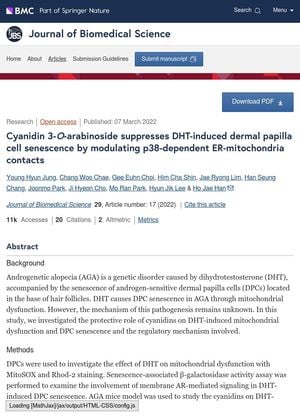
TLDR Cyanidin 3-O-arabinoside may help treat a common form of hair loss by protecting cells against aging and improving cell function.
The study investigated the effects of cyanidin 3-O-arabinoside (C3A) on dihydrotestosterone (DHT)-induced dermal papilla cell (DPC) senescence, a condition linked to androgenetic alopecia (AGA), a common form of hair loss. The researchers found that C3A decreased DHT-induced mitochondrial reactive oxygen species accumulation in DPCs and reversed DHT-induced DPC senescence. C3A also prevented excessive mitochondrial calcium accumulation and inhibited p38-mediated voltage-dependent anion channel 1 (VDAC1) expression, which contributes to mitochondria-associated ER membrane (MAM) formation and calcium transfer. In AGA mice models, C3A restored DHT-induced hair growth deceleration and activated hair follicle stem cell proliferation. The study concludes that C3A is a promising natural compound for AGA treatments against DHT-induced DPC senescence by reducing MAM formation and mitochondrial dysfunction.
View this study on jbiomedsci.biomedcentral.com →
Cited in this study

research 5‐Alpha reductase inhibitors in androgenetic alopecia: Shifting paradigms, current concepts, comparative efficacy, and safety
Dutasteride works better than finasteride for hair loss, with both being safe to use.

research Dickkopf-1 Expression in Androgenetic Alopecia and Alopecia Areata in Male Patients
DKK-1 gene linked to hair loss in AGA and AA patients; more research needed for potential therapy.
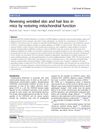
research Reversing wrinkled skin and hair loss in mice by restoring mitochondrial function
Restoring mitochondrial function in mice reversed their skin wrinkling and hair loss.

research Androgen modulation of Wnt/β-catenin signaling in androgenetic alopecia
Androgens may block hair growth signals, targeting this could treat hair loss.
research Sexual side effects of 5-α-reductase inhibitors finasteride and dutasteride: A comprehensive review
research Mechanism of action of minoxidil in the treatment of androgenetic alopecia is likely mediated by mitochondrial adenosine triphosphate synthase-induced stem cell differentiation.

research Stress-induced premature senescence of dermal papilla cells compromises hair follicle epithelial-mesenchymal interaction
Stress can cause early aging in certain skin cells, leading to problems with hair growth.

research Oxidative Stress–Associated Senescence in Dermal Papilla Cells of Men with Androgenetic Alopecia
Oxidative stress affects hair loss in men with androgenetic alopecia.
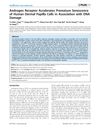
research Androgen Receptor Accelerates Premature Senescence of Human Dermal Papilla Cells in Association with DNA Damage
Androgen receptor signaling causes early aging of cells important for hair growth by damaging their DNA.

research New investigational drugs for androgenetic alopecia
Possible new treatments for common hair loss include drugs, stem cells, and improved transplants.

research Minoxidil Use in Dermatology, Side Effects and Recent Patents
Minoxidil treats hair loss, promotes growth, has side effects, and has recent patents.
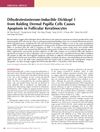
research Dihydrotestosterone-Inducible Dickkopf 1 from Balding Dermal Papilla Cells Causes Apoptosis in Follicular Keratinocytes
A substance called DKK-1 increases in balding areas and causes hair cells to die when exposed to DHT.

research Evaluation of androgens in the scalp hair and plasma of patients with male-pattern baldness before and after finasteride administration
Finasteride lowers scalp and blood DHT levels, potentially treating male-pattern baldness.
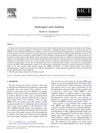
research Androgens and alopecia
Male hormones, particularly DHT, are linked to male pattern hair loss, and treatments like finasteride can help, but they don't work for postmenopausal women's hair loss, which may have different causes.
Related

research Possible Cellular Communication with Human Follicle Dermal Papilla Cells via Secretions from Human Hair Follicle Keratinocytes
Substances from human hair cells can affect hair loss-related genes, potentially leading to new treatments for baldness.

research A model system to analyse the ability of human keratinocytes to form hair follicles
Scientists developed a system to study human hair growth using skin cells, which could help understand hair development and improve skin substitutes for medical use.

research Review of hair follicle dermal cells
Dermal cells are key in controlling hair growth and could potentially be used in hair loss treatments, but more research is needed to improve hair regeneration methods.
research STUDY ON HAIR FOLLICLE FORMATION INDUED BY DERAMAL PAPILLA CELL
Dermal papilla cells can help form hair follicles and produce hair.
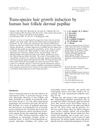
research Trans‐species hair growth induction by human hair follicle dermal papillae
Human hair follicle cells can grow hair when put into mouse skin if they stay in contact with mouse cells.

research Role of hair papilla cells on induction and regeneration processes of hair follicles
Hair papilla cells can create and regenerate hair bulbs under the right conditions.